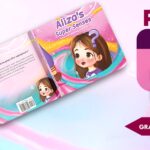If you sell soap, you’ve likely wondered whether your packaging is helping the planet or contributing to waste. More shoppers are paying attention to how products are packaged these days. Even if your soap smells amazing, wrapping it in plastic could make some customers hesitate before buying.
To better align with eco-conscious customers, this article offers helpful guidance. We’ll explore how to determine if your packaging is sustainable—and if not, what plastic-free alternatives might work for you. Let’s dive in.
Why Consider Plastic-Free Alternatives for Soap Packaging?
Cost is a major factor for brands when choosing packaging, which explains why plastic remains a common choice—it’s inexpensive to produce. However, its environmental impact is significant: it doesn’t break down easily and can persist in the environment for decades. Contaminated soil, habitat destruction, and microplastic pollution are just some of the challenges it creates.
At first glance, plastic-free packaging might seem like just a trend, but the shift reflects deeper consumer awareness. Retail and e-commerce brands looking to align with sustainability should consider plastic-free options. Here’s why:
- Customer preferences are evolving: Millennials and Gen Z often prioritize brands that support eco-friendly practices.
- Regulations are tightening: Many regions now restrict single-use plastics in packaging.
- Enhanced shelf appeal: Materials like paper, cloth, or natural finishes can make your soap appear more authentic and artisanal, potentially boosting its perceived value.
This change can benefit both the environment and your brand’s reputation.
Checklist: Is Your Packaging Sustainable?
Now that we’ve covered the “why,” let’s assess whether your current soap packaging meets sustainability standards. Ask yourself these questions:
- Is it made from renewable resources like paper, cotton, or bamboo?
- Can customers easily recycle or compost it at home?
- Are the inks and dyes minimal and nontoxic?
- Is it free of plastic linings or coatings?
- Is it lightweight to help reduce shipping emissions?
If you answered “yes” to most, your packaging is on the right track. If not, it might be time to explore alternatives.
Eco-Friendly Soap Packaging Options
There are many sustainable, cost-effective, and visually appealing alternatives to plastic. Some practical choices include:
- Kraft Paper Wraps: Affordable, compostable, and great for handmade bars.
- Corrugated Soap Boxes: Sturdy, recyclable, and ideal for delicate or moisture-sensitive soaps.
- Seed Paper Wraps: Plantable after use, adding an extra layer of sustainability.
- Glassine Paper Envelopes: Compostable and semi-transparent, letting your soap’s colors shine through.
- Cotton or Jute Pouches: Reusable and durable, offering added value to customers.
There are also bags, paper bands, wrapping paper, rope or string, and other types of custom soap packaging that are considered plastic-free alternatives to package soap.
Choosing the Right Packaging for Your Soap Type
Different soaps require different packaging approaches. Here’s a breakdown to help you decide:
Moisture-Sensitive or Glycerin Soaps
These soaps can absorb moisture from the air, becoming soft or sticky. Consider corrugated boxes lined with waxed or butter paper, or glassine envelopes inside kraft boxes for extra protection.
Premium Artisan or Decorative Soaps
For luxury soaps, options like seed paper wraps, glassine envelopes, or rigid kraft boxes with custom inserts work well. A recycled cardboard sleeve with minimal printing can enhance the unboxing experience.
Gift Sets or Multi-Bar Bundles
Present them in reusable cotton or jute pouches with ribbons or branded tags. Biodegradable paper fillers inside kraft boxes help protect individual bars while maintaining a premium look. For a unique touch, try Furoshiki-style fabric wrapping.
Everyday Handmade Bars for Retail or Farmers Markets
Keep it simple with kraft paper wraps, biodegradable sleeves, or compostable labels. Twine or recycled string can add a rustic, handmade feel.
Travel or Mini Soap Bars
Small recycled paperboard boxes or compostable glassine bags are practical choices. Including a QR code linking to your brand’s sustainability efforts could further engage customers.
These are just recommendations—think about what your customers would prefer. The right packaging depends on your soap’s unique needs.
Key Takeaways: What’s Next?
Transitioning to plastic-free packaging may feel challenging at first, but breaking it into steps can help:
- Evaluate your current packaging using the checklist above.
- Match your soap type with a suitable sustainable option.
- Test different methods and scale gradually based on customer feedback and demand.
If you are looking for soap packaging that aligns with sustainability practices, go with a good custom packaging manufacturer that understands your needs. There are many companies out there, like Half Price Packaging, that offer sustainable packaging solutions at highly affordable prices. So, check out the manufacturers that fit your needs and compare them to find the right one for you.
Published by Jeremy S.

















